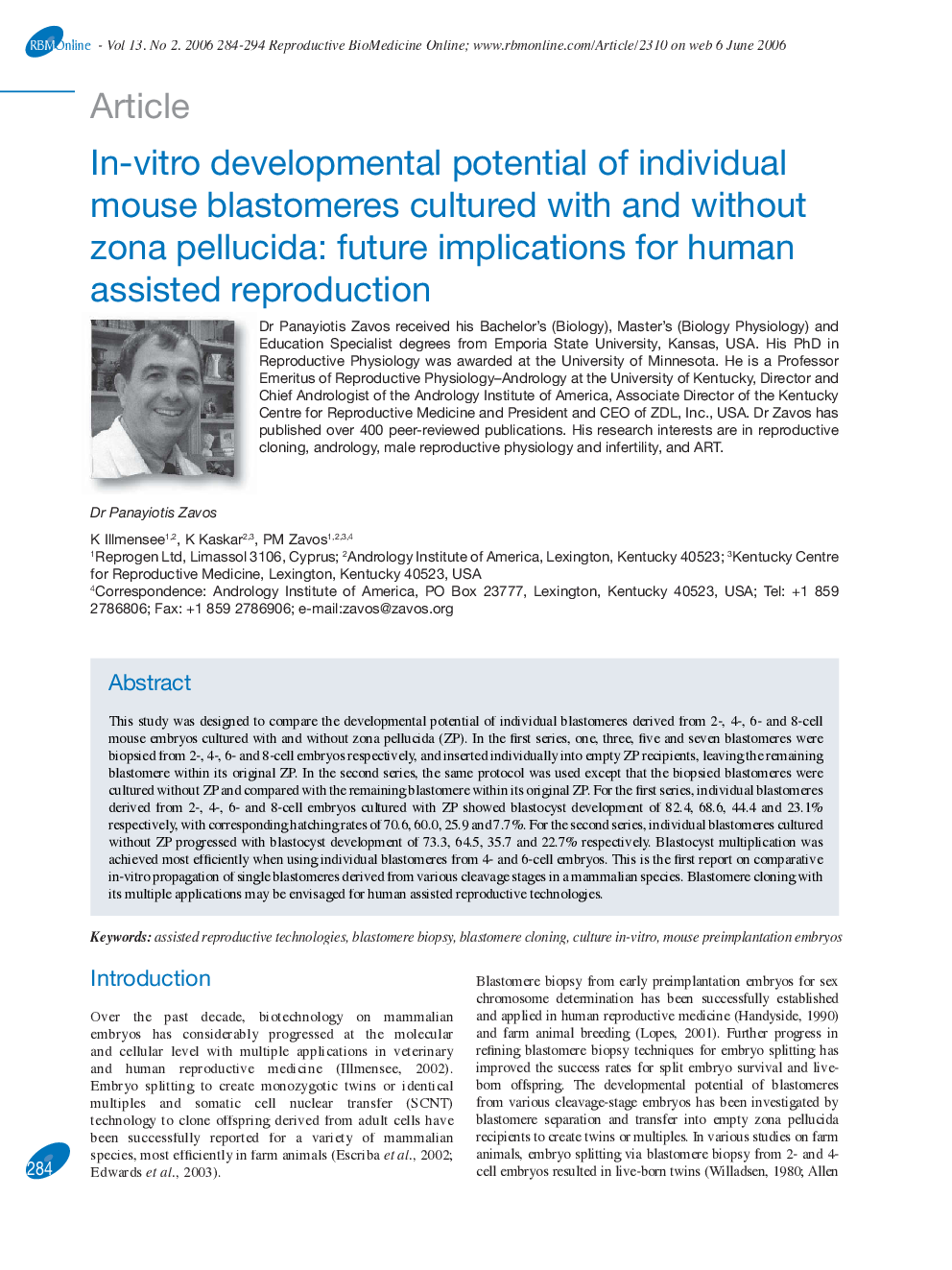| Article ID | Journal | Published Year | Pages | File Type |
|---|---|---|---|---|
| 3972852 | Reproductive BioMedicine Online | 2006 | 11 Pages |
This study was designed to compare the developmental potential of individual blastomeres derived from 2-, 4-, 6- and 8-cell mouse embryos cultured with and without zona pellucida (ZP). In the first series, one, three, five and seven blastomeres were biopsied from 2-, 4-, 6- and 8-cell embryos respectively, and inserted individually into empty ZP recipients, leaving the remaining blastomere within its original ZP. In the second series, the same protocol was used except that the biopsied blastomeres were cultured without ZP and compared with the remaining blastomere within its original ZP. For the first series, individual blastomeres derived from 2-, 4-, 6- and 8-cell embryos cultured with ZP showed blastocyst development of 82.4, 68.6, 44.4 and 23.1% respectively, with corresponding hatching rates of 70.6, 60.0, 25.9 and 7.7%. For the second series, individual blastomeres cultured without ZP progressed with blastocyst development of 73.3, 64.5, 35.7 and 22.7% respectively. Blastocyst multiplication was achieved most efficiently when using individual blastomeres from 4- and 6-cell embryos. This is the first report on comparative in-vitro propagation of single blastomeres derived from various cleavage stages in a mammalian species. Blastomere cloning with its multiple applications may be envisaged for human assisted reproductive technologies.
